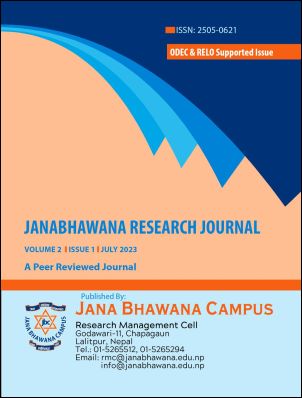Impact of Mobile Telecommunication Access on Porters' Living Standard: A Study based on Street Porters in Kathmandu City
DOI:
https://doi.org/10.3126/jrj.v2i1.57491Keywords:
telecommunications, access, living standard, street porters, paired t testAbstract
This paper examines how telecommunication access has affected the living standard of street porters and what are their mobile telecom service usage. The study used income, expenditure, saving, and factors affecting these variables to assess the change in living standard of street porters. The study used descriptive and explorative research design with a before-after approach. Primary data obtained from 440 street porters using purposive random sampling method was used. Both telephone questionnaire and interview schedule consisting comprehensive 54 items were administered. The tools of analysis used were descriptive statistics and inferential parametric (t- test, paired t- test) and non-parametric statistics (McNemar test). The study found that street porters use voice service mainly to talk to family and to take load orders. More than half of the sample (56%) were found to use less than 5 minutes call per day on average with 5 to 10 call counts for load per day. The study also found that mobile communication access has increased the income per day, expenditure per day and monthly saving of street porters. Further, the study also found mobile communication has enhanced the income generating factors like efficiency of street porters, bargaining power, market exploration and reduction in travel and search cost. Based on the analysis of income and expenditure, the study concluded that mobile communication access has improved the living standard of street porters.
Downloads
Downloads
Published
How to Cite
Issue
Section
License
Copyright (c) 2023 Jana Bhanawa Campus, Research Management Cell

This work is licensed under a Creative Commons Attribution-NonCommercial 4.0 International License.
CC BY-NC: This license allows re-users to distribute, remix, adapt, and build upon the material in any medium or format for non-commercial purposes only, and only so long as attribution is given to the creator.




